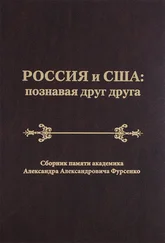James Garner - Government in the United States, National, State and Local
Здесь есть возможность читать онлайн «James Garner - Government in the United States, National, State and Local» — ознакомительный отрывок электронной книги совершенно бесплатно, а после прочтения отрывка купить полную версию. В некоторых случаях можно слушать аудио, скачать через торрент в формате fb2 и присутствует краткое содержание. Жанр: История, foreign_antique, foreign_prose, на английском языке. Описание произведения, (предисловие) а так же отзывы посетителей доступны на портале библиотеки ЛибКат.
- Название:Government in the United States, National, State and Local
- Автор:
- Жанр:
- Год:неизвестен
- ISBN:нет данных
- Рейтинг книги:5 / 5. Голосов: 1
-
Избранное:Добавить в избранное
- Отзывы:
-
Ваша оценка:
- 100
- 1
- 2
- 3
- 4
- 5
Government in the United States, National, State and Local: краткое содержание, описание и аннотация
Предлагаем к чтению аннотацию, описание, краткое содержание или предисловие (зависит от того, что написал сам автор книги «Government in the United States, National, State and Local»). Если вы не нашли необходимую информацию о книге — напишите в комментариях, мы постараемся отыскать её.
Government in the United States, National, State and Local — читать онлайн ознакомительный отрывок
Ниже представлен текст книги, разбитый по страницам. Система сохранения места последней прочитанной страницы, позволяет с удобством читать онлайн бесплатно книгу «Government in the United States, National, State and Local», без необходимости каждый раз заново искать на чём Вы остановились. Поставьте закладку, и сможете в любой момент перейти на страницу, на которой закончили чтение.
Интервал:
Закладка:
B. The Pennsylvania Type. – As New York was the parent of the supervisor system, Pennsylvania became the parent of the commissioner system. Instead of a county board composed of representatives from the various townships in the county, provision was made for a board of commissioners elected from the county at large. The Pennsylvania system spread to Ohio and from there to Indiana and later to Iowa, Kansas, Missouri, Nebraska, North Dakota, and South Dakota. In some states the commissioners are elected by large districts into which the county is divided for that purpose.
Thus, first to New York, and second to Pennsylvania belongs the honor of predetermining the character of local government in the West. The county-township system is the most widely distributed system of local government in the United States, and seems destined to become the prevailing system for the country as a whole. 7 7 Goodnow, "Comparative Administrative Law," Vol. I, p. 178.
The principal difference between the two types consists in the presence of the town meeting in the northern tier of states where the New York type prevails, and its absence in the states where the Pennsylvania type was introduced; in the different manner in which the county boards are constituted; and in the relative importance of the county and township in the local governments of the two groups of states.
Conflict of Different Systems in the West.– An illustration of the attachment of the people of different parts of the country to the local institutions to which they were early accustomed, is found in the conflict which took place in Illinois between the settlers in the northern and southern parts of the state. The southern part of the state was settled largely by people from the South, who brought with them the Southern ideas of local government, and as they constituted the bulk of the population of the state at the time it was admitted to the Union, the system of county government was established by law throughout the state; but the county board was organized on the Pennsylvania plan and not according to the old Southern system. The northern part of the state, on the other hand, was settled mainly by people from New England, who were likewise strongly attached to the local government to which they had been accustomed. They succeeded, therefore, in securing the adoption of a clause in the constitution (1848), allowing the people of each county to adopt the township system whenever the majority of the legal voters of the county voting at any general election should so determine. Under the operation of this "home rule" provision, 85 of the 102 counties of the state have adopted the township system. A somewhat similar conflict occurred in Michigan, where the Pennsylvania commissioner system was first introduced, but with the influx of inhabitants from New York and New England dissatisfaction with that system increased until finally it was displaced by the New York or supervisor type.
References.– Beard, American Government and Politics, ch. xxix. Bryce, The American Commonwealth (abridged edition), chs. xlvii-xlviii. Fairlie, Local Government in Towns, Counties and Villages, chs. iv-v, viii-xi. Fiske, Civil Government in the U. S., chs. ii-iv. Hart, Actual Government, ch. x. Hinsdale, American Government, ch. lv. Wilson, The State (revised edition), secs. 1035-1043. Willoughby, Rights and Duties of Citizenship, pp. 260-265.
Documentary and Illustrative Material.– 1. A map of the state showing its division into counties. 2. A map of the county showing the towns, townships, supervisors' districts, or other civil subdivisions. 3. A copy of a town meeting warrant. 4. A copy of the proceedings of the county board or town meeting, as published in the local newspaper. 5. The legislative manual or blue book of the state in which lists of counties and their subdivisions, with their population, area, officers, and other information may be found. Usually this may be procured from the secretary of state. 6. Reports of county officers. 7. Copies of the state constitution, which may usually be obtained from the secretary of state; and, if possible, a copy of the revised statutes of the state. 8. Volume of the census report on population.
1. What is the distinction between local self-government and centralized government? What are the advantages of a system of local self-government?
2. Why should counties, towns, and cities be subject in some measure to the control of the state?
3. What are the provisions in the constitution of your state in regard to local government?
4. How many counties are there in your state? What is the area and population of the largest? of the smallest?
5. How may new counties be created in your state? How may old counties be divided? How are county seats located?
6. Enter in your notebook a list of the county officers in your county. For how long a term is each elected?
7. Which one of the three forms of local government described above does the system under which you live most nearly approach?
8. How many members are there on your county board? Are they called commissioners or supervisors? Are they elected from the county at large or from districts?
9. What are the political subdivisions of your county called, and how many are there?
10. If you live in a state where the town system of local government exists, make a list of the town officers and state their duties.
11. Is the town meeting a part of the system of local government where you live? If so, how often is it held?
12. Are the public roads in your community under county or town control? the poorhouse? the assessment and collection of taxes?
13. How many justices of the peace and constables are there in your town or district? Give their names.
CHAPTER II
LOCAL GOVERNMENT, CONTINUED: CITIES AND VILLAGES
Need of Municipal Government.– The systems of local government described in the preceding chapter are those which have been devised mainly for rural communities, that is, communities containing a scattered population engaged principally in agricultural pursuits. In a sparsely settled community the governmental needs of the people are comparatively few, and a simple governmental organization is sufficient for supplying those needs. In a densely populated community, however, a more complex and differently organized form of government must be provided. When, therefore, a community becomes so populous that it cannot be governed effectively by town meetings, small boards, and the other forms of political machinery described in the previous chapter, it is incorporated as a municipality, that is, the state gives it a charter which confers upon it special powers and privileges and provides it with a somewhat different type of local government for the exercise of those powers. The minimum population necessary to constitute a city varies in the different states. They all require, however, that there must be a considerable number of inhabitants occupying a comparatively small area of territory, before the community can be incorporated as a city. In Illinois, for example, any community having at least 1,000 inhabitants resident within an area not exceeding four square miles may become a city. In some other states, a population of not less than 5,000 is required, while in some a still larger number is required. The census bureau of the United States, for statistical purposes, has at different times taken 8,000 and 2,500 as the minimum population required to constitute a city.
Growth of Cities.– One of the most remarkable political and social facts of the past century was the growth of towns and cities. When the Constitution of the United States went into operation there were but thirteen cities in the whole country with populations exceeding 5,000 each. Only about four per cent of the people then lived under urban conditions: rural life was the rule, and city life the exception. Since the middle of the last century, however, there has been a remarkable change in the relative proportion of the total population living in the cities and in the country. According to the federal census of 1910 there were 1,232 cities in the United States with a population of more than 5,000 each, and in them lived 42 per cent of all the people. The number is now considerably larger. It is estimated that 90 per cent of the people of Massachusetts now live in cities of over 5,000 inhabitants, and in a few other states the urban population constitutes more than two thirds of the whole. More than half the population of New York state is now found in the city of New York alone. Even in several states of the West, as Illinois, more than half the population is now living under urban conditions. What is even more remarkable has been the rapidity with which many American cities have grown to their present size. Thus New York in a period of 100 years grew from a city of 50,000 inhabitants to a city of more than 4,000,000. The growth of Chicago was even more rapid. In 1907 there was still living in that city the first white person born within its present limits. This person saw Chicago grow from a petty prairie village to a city of more than 2,000,000 souls.
Читать дальшеИнтервал:
Закладка:
Похожие книги на «Government in the United States, National, State and Local»
Представляем Вашему вниманию похожие книги на «Government in the United States, National, State and Local» списком для выбора. Мы отобрали схожую по названию и смыслу литературу в надежде предоставить читателям больше вариантов отыскать новые, интересные, ещё непрочитанные произведения.
Обсуждение, отзывы о книге «Government in the United States, National, State and Local» и просто собственные мнения читателей. Оставьте ваши комментарии, напишите, что Вы думаете о произведении, его смысле или главных героях. Укажите что конкретно понравилось, а что нет, и почему Вы так считаете.












